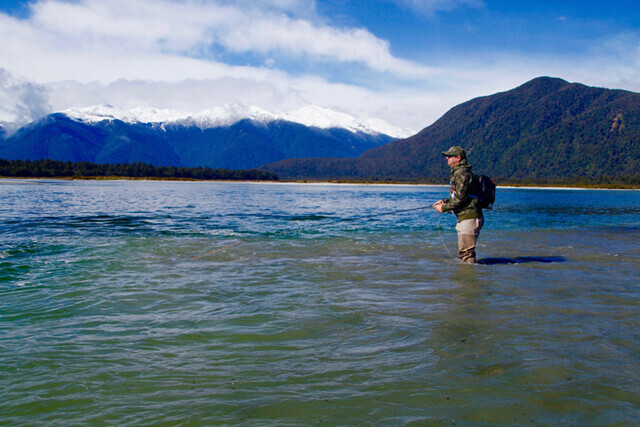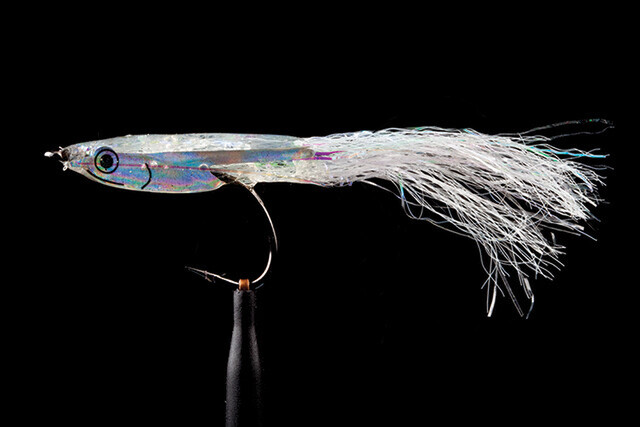It's common for 'big water syndrome' to overwhelm many new to fishing our larger tidal estuaries, however it's not about blind chuck and chancing it. There are reasons some anglers consistently do better than others in big water and when those guys struggle, you know it’s been a tough day.
Estuaries abound with structure, much like our upriver locations, and a wise angler will identify suitable structure and fish it accordingly. Channels, the drop offs submerged debris and the seams, gravel bars, islands and inflow all offer cover for predatory trout. Often you will need to wade to teach such locations and a longer, controlled cast is of benefit here.
When the tide pulls strong many baitfish will move out to the edges as they migrate upstream, where the currents are softer and are subsequently found in the eddies and calmer pools. Casting at a soft angle along the beach and retrieving slowly upstream is a productive tactic here. Beware not to be wading through water you should be fishing. Be constantly on the lookout for birds diving for baitfish, and always the swirl or movement of a trout. Missing a visual cue will cost you fish.
A Simms wading staff allows you to safely wade the estuaries, feeling for submerged debris and drop offs while an Airflo 40+ or similar shooting head allows you to cover the distance quickly, and easily when needed. A good selection of flies of different profiles, colours and materials is desirable however if your fly is there, and the fish is there then they're usually pretty accommodating. Considerations should be made however for clear, bright and calm conditions and such days will often require different patterns than dirty, dark stormy days. A constant in all my patterns however are prominent eyes: as Clark Reid reiterated recently, eyes are an important visible trigger on baitfish patterns, especially in dirty water.
A cellular phone (check coverage), Sat phone or other means of communication is a must when fishing tidal zones. It's all too easy to get into strife on some of our larger estuaries where the tide movements are unexpectedly extreme. That shallow trickle of a channel you crossed but 10 minutes ago may now have become an impassable tidal gut.
The best of the estuaries are ahead of us as temps warm up, so get out there, put in the yards and enjoy the silvery rewards!


